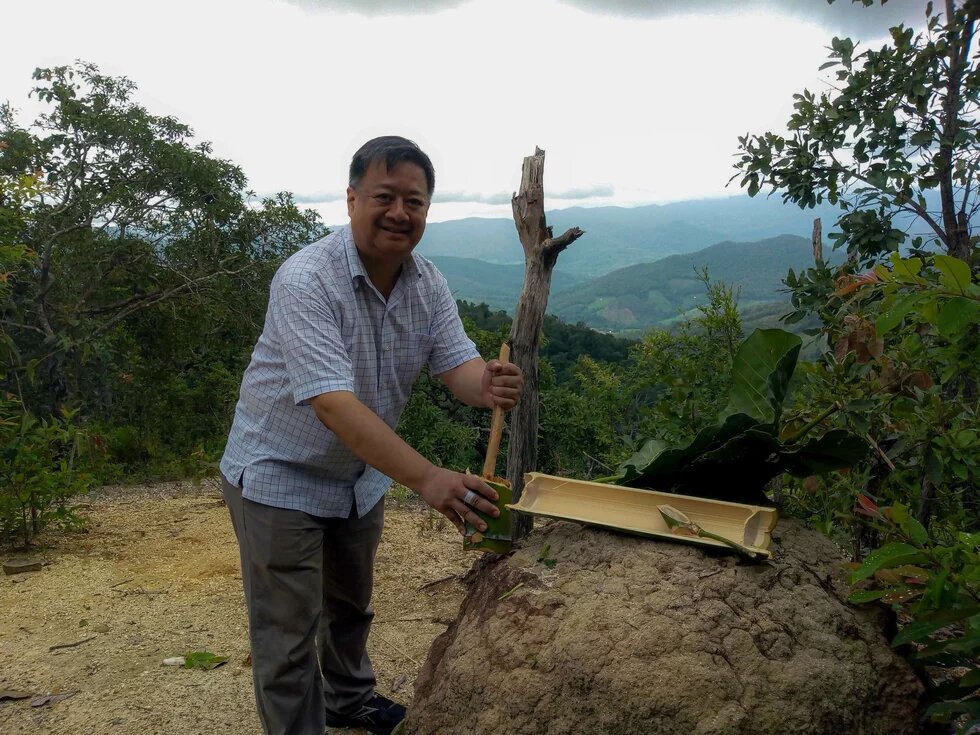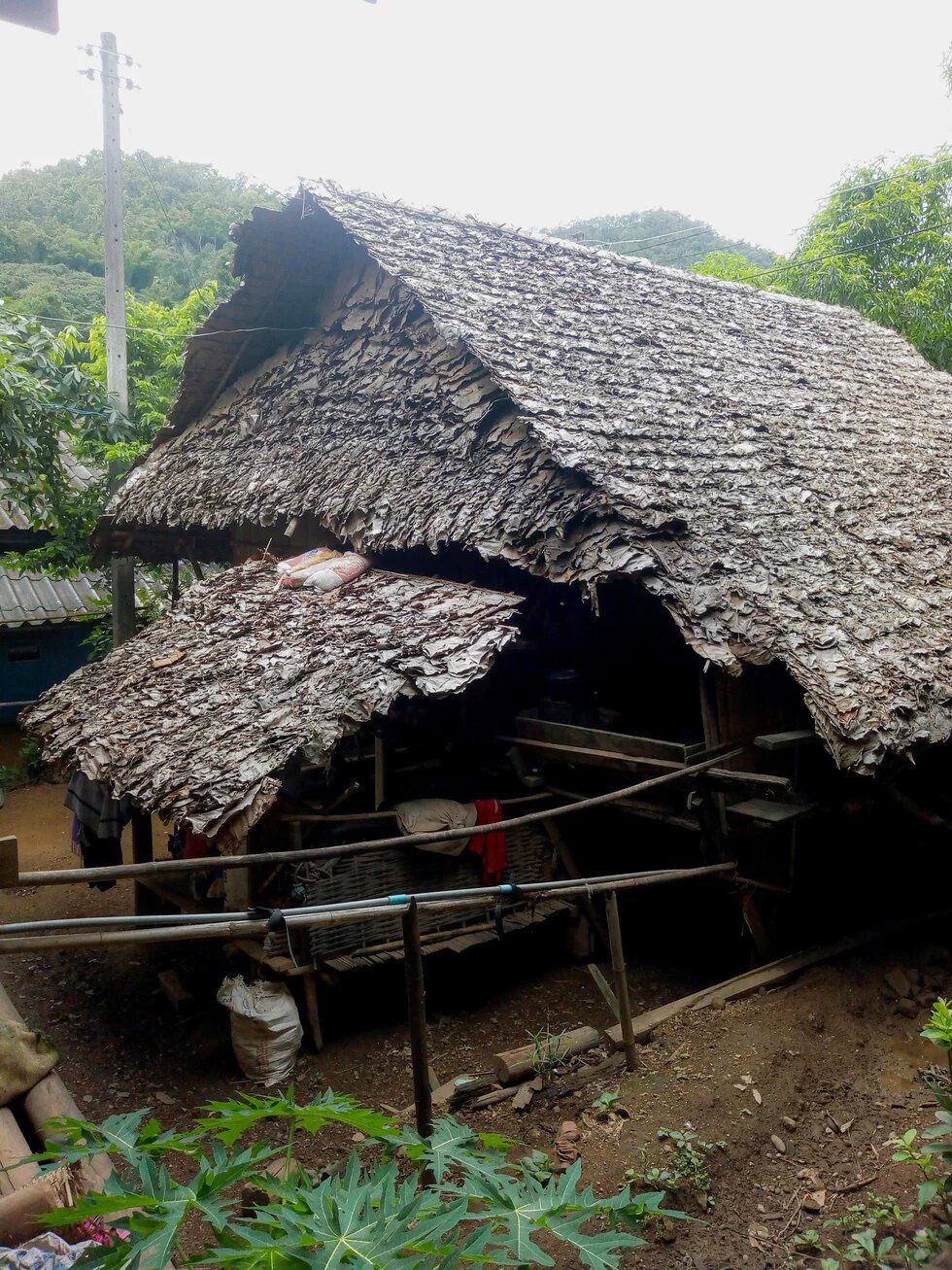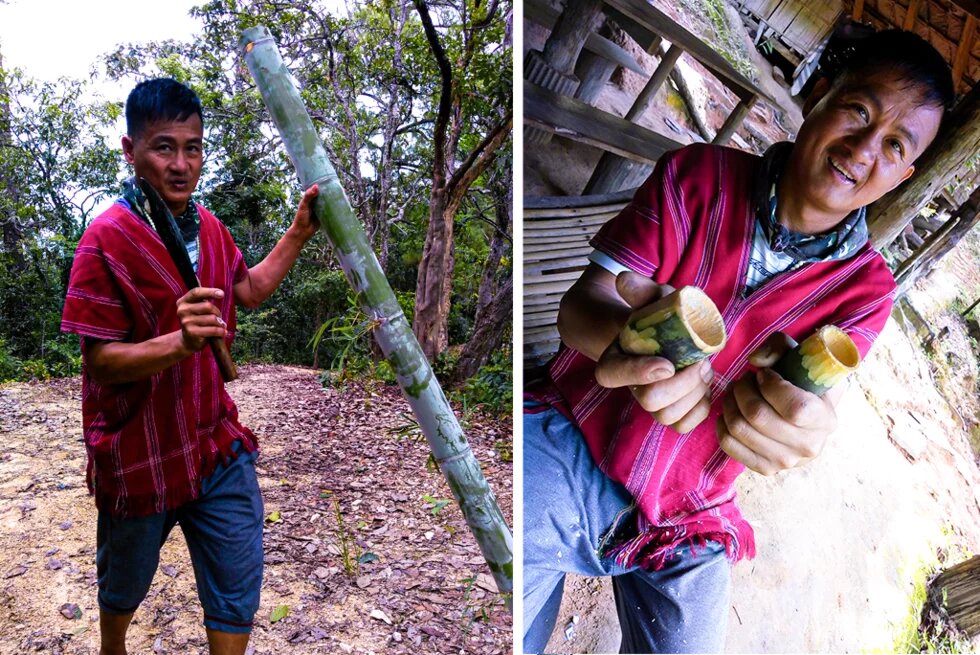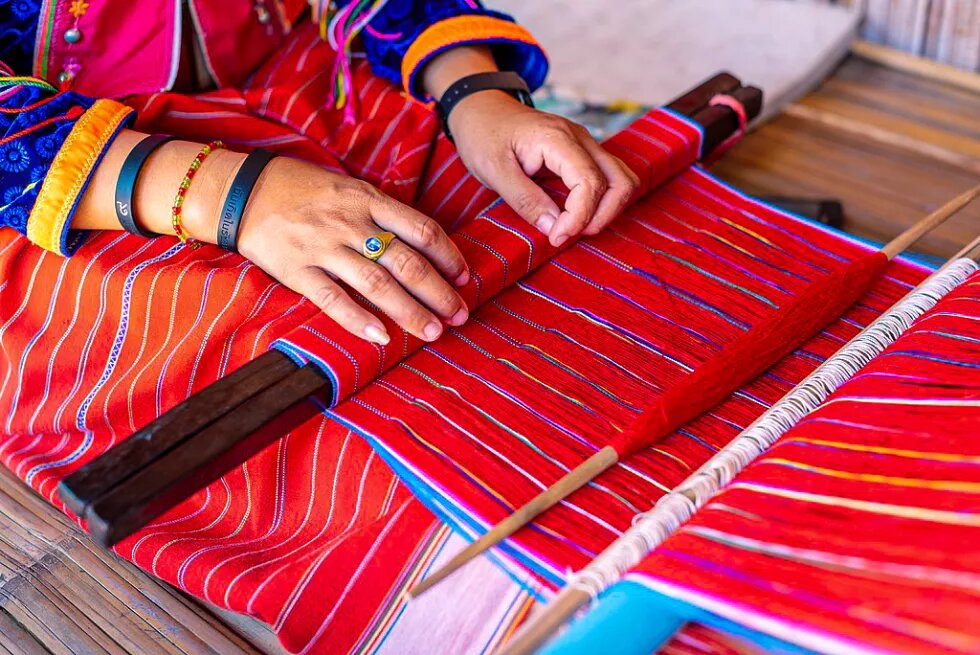
A trek in Thailand reveals the secrets of the jungle and the heart of a people.
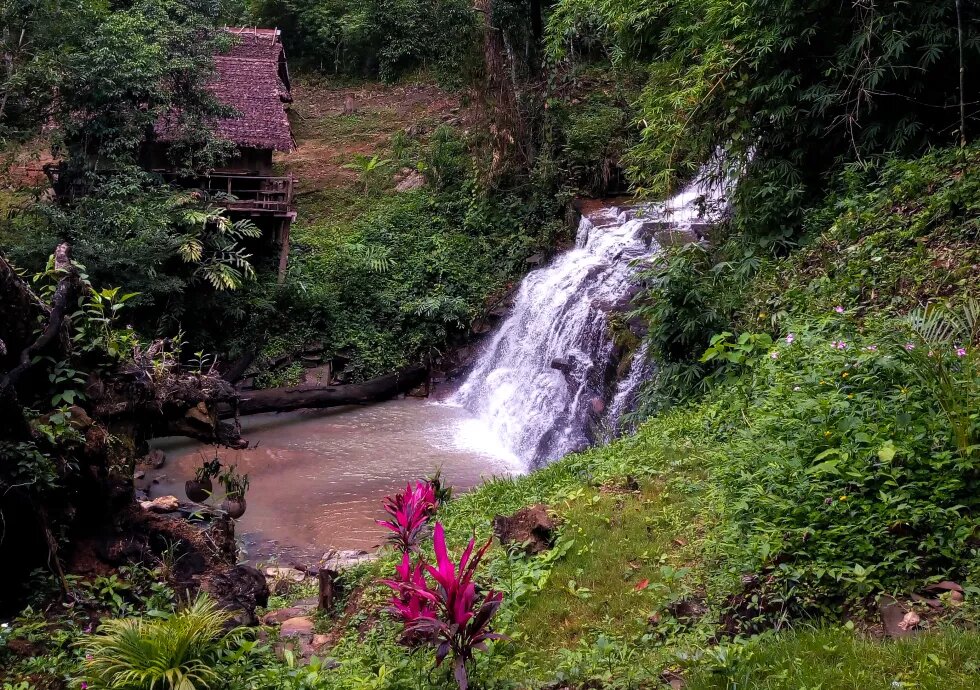
Mr Saicom and I are clutching the bars of our dusty songthaew, bouncing off our seats as our driver, Mr Lon, navigates unpaved mountain roads in the wilds of northern Thailand. The converted flatbed pick-up truck with two parallel benches in the back is a common form of transportation all around the country, used to ferry kids to school, commuters to work, and vegetables to market, sometimes all at the same time. Ours is careening through the hills above the Maenam Wang, the north-south river about an hour out of Chiang Mai.
The two of us have the back of this truck to ourselves, but that's the only luxury of this ride. Saicom is splayed across his bench like a cartoon character hanging on for dear life, but he seems unperturbed. I’m here to get a glimpse of how the area’s Karen people live and view the world that surrounds them. The Karen believe that their roots lie in the Gobi Desert, but as early as the 8th century, they migrated to what is now Myanmar, the country they still call Burma. Starting in the 18th century, some settled in this area, which was sometimes allied with the Burmese and sometimes with the Kingdom of Lanna and rulers of Ayutthaya and Siam, which turned into modern-day Thailand.
Today, as many as a million people identify as Karen in Thailand, a term that refers to a number of distinct minority ethnic groups that share very little in language or culture and are found on either side of the Thai-Myanmar border.
Ms Nukul (pronounced ‘Noo-koon’) Jorlopo explained to me why she's passionate about promoting the culture of her people and dispelling a few misconceptions along the way. “We're Thai, but we're not Thai,” she says. What she means is that she is a Thai citizen who went to Thai school – not all Karen people have the same rights, and those without papers have little access to jobs or education – but she has still had to overcome discrimination. In school, her accent gave away the fact that Thai was her second language, she tells me. “I remember the other girls making fun of me because I didn't sound like them.”
When she was 23 and had just given birth to her first son, a friend introduced her to Daughters Rising, an NGO that provides education and job opportunities to women from local ethnic groups. Through education and mentoring, the group gives women, particularly those who are vulnerable to human trafficking, opportunities they didn’t know existed. A chance meeting with a mother in extreme poverty who was about to sell her own daughter off prompted the founders to find sustainable solutions for girls and women at risk.
Galvanized by the need to provide for her newborn son and supported by Daughters Rising, Nukul learned English, then qualified as a tour guide; soon after, she founded Chai Lai Sisters, a small business that takes visitors trekking around Chiang Mai. She decided it would only be fitting that the proceeds of this experience, built around the lives of the Karen people, would go back to Daughters Rising. She had planned to be my guide on this trip but now needs to stay home to take care of her mother, who is recovering from a respiratory infection, so instead, Saicom and Lon are waiting with the four-wheel drive to escort me into the hills.
In the songthaew, Saicom, who is also Karen, is regaling me with examples of the tribe’s traditions and beliefs. Many of these have to do with appeasing spirits of the land, water, and trees, or those evil spirits that might just eat humans if they don't get the respect they are due. All sorts of occasions can call for offerings, and these are often measured in carefully calculated quantities. After a successful rice harvest, for example, thanks might be given in the form of a pre-determined number of pigs, he says. Atoning for a transgression like premarital sex might be made up for in chickens for the spirits, and a few for the neighbors. Other events like births, marriages, or death might call for bottles of rice moonshine, or maybe some combination of livestock and homemade hooch. And no meal at home begins until a small plate of rice has been offered to the spirits at a shrine or spirit house reserved for that very purpose. Despite the fact the majority of Karen in Thailand have converted to Buddhism and a sizable minority have become Christian, their ancient animist practices survive. I find the almost transactional nature of the beliefs fascinating, but as we hit another bump in the road, the urban city boy in me wonders just what I've signed up for.
We drive until we reach a clearing with spectacular views over the valley. This is the spot we've picked to cook lunch. Saicom and I gather kindling while Lon wanders off in search of bamboo. He comes back dragging a pole that is eight feet long, and then quickly breaks it down with a machete into bamboo tubes. The bamboo has to be green; if it's too mature and dry, it will catch fire and crack before the food inside is cooked. Each segment of the hollow bamboo tube is separated by an inner wall. The men stand three lengths upright to form cooking pots, stuffing the meat, vegetables and spices into the open ends.
After a filling lunch of fragrant pork, steamed scrambled eggs mixed with herbs, and a vegetable soup all cooked in bamboo, we get back on the road. As we bounce along, Saicom explains the changes in the landscape we're driving through. “Here, see how the forest is green and lush, and bamboo is plentiful?” he asks. When we reach the jungle, he shows me that the ground is dryer, the vegetation is darker, and bamboo is nowhere to be found.
We drive another 15 minutes down a dirt road, and then get out and start walking. Right away we’re rewarded with a breathtaking view of Doi Inthanon, Thailand's highest peak off in the distance. Saicom gives a running commentary on the plants we pass, wisdom he learned from his grandmother. I can't keep up with the names he reels off in Thai and Karen: this bark is good for dizziness, that leaf helps you digest, another bitter root makes a healthy tea. He sees the bandage I'm wearing on one of my fingers covering a small burn from a clumsy kitchen encounter with hot oil a few days earlier. I unwrap the wound, and with the blade of his machete, he applies the sap of a tree that he says is antiseptic and will help heal the wound. (I get a second application on the trek back out the next morning, and by nighttime, the raw sore had formed a neat little scab.)
We reach the camp just as the late afternoon rain starts. The bare-bone huts on stilts were originally built by Lon's father-in-law as a shelter for Karen people and for the pilgrims from the temple who wanted to stay nearby. My shack contains a firm bed surrounded by mosquito nets, a pillow and a stack of blankets. There are no other furnishings. Each house has a roof of brown-leaf shingles that are waterproof. As the guest of honor, I've been given the shack with its own toilet.
The payoff for coming all this way is the waterfall that sits in the middle of the site. Known to locals as the Huay Yuak (which loosely translates to Banana Stalk Stream) Waterfall, the site is not on any map. You can wade into the torrent and wash off the grime of the jungle in the clear mountain water.
By candlelight after dinner, Saicom tells me more of the stories he remembers from his childhood, just like the ones he'd hear before TV or internet reached his village. The stories are real and imagined; some are about happy or sad events from his family's history (the time spent at his grandmother's side in the jungle, or his father's suicide when he was only eight years old), and others are about how the Karen people came from Tibet and spread around the region.
The fact is that most Karen people don't live in the mountains anymore, and they don't depend on nature for sustenance, medicine, or shelter. They live in houses with hot water and high-speed internet, drive big cars and nimble motorbikes, and go to the doctor when they are sick. But sleeping at the retreat even one night is a reminder of a simpler time, not that long ago, when people managed with much less.
“Now children have to go to school, right? They are learning different,” he said to me. Sure, they can read and write, but there was danger, he felt, in what they don't learn anymore. “How we sing, how we dance, how we teach” – these things that used to be passed down from generation to generation are now slowly disappearing. Telling these stories is his small contribution to keeping them alive.
Before we set off the next morning, Saicom carves a little round box out of two interlocking pieces of bamboo. As we walk back out of the valley, he fills it with some of the bark and leaves we had seen the previous day to create a natural inhaler for me. Thais and Karen use ya dom to clear their sinuses, banish headaches, or sniff as a little pick-me-up.
I take a whiff and we head back out the way we came: trek, jungle, forest, unpaved road, paved road, village.
__
Vincent Vichit-Vadakan is a Bangkok-based freelance writer. His writing has appeared in publications around the world including the South China Morning Post, Nikkei Asia, The Guardian, Insider and Travel+Leisure Southeast Asia. In addition to social issues and current affairs, his work also reflects his keen interest in food, tourism and culture.
The views expressed in this article are not necessarily those of Heinrich Böll Stiftung.


